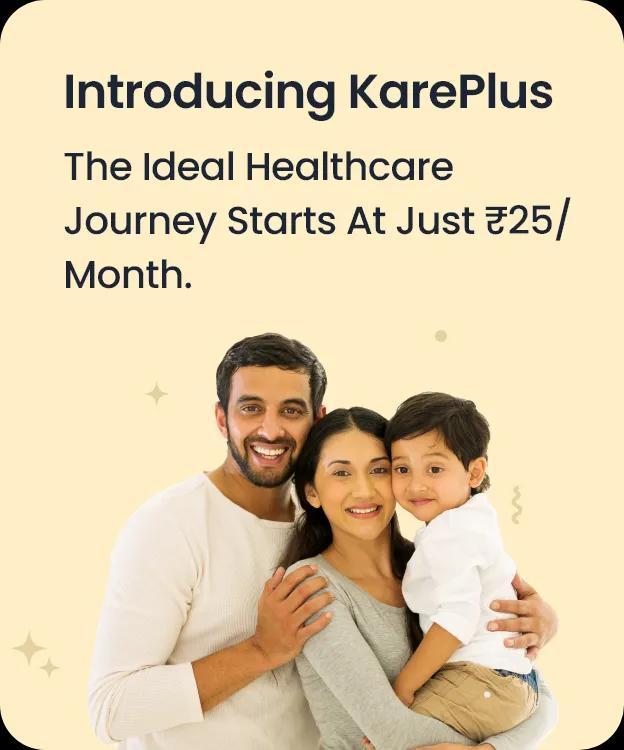Varicose Veins and Lifestyle: Prevention Tips in the Indian Context
In This Article
Varicose Veins and Lifestyle: Prevention Tips in the Indian Context
Indu
Updated on August 13, 2024
Medically verified by Dr. Arya
Fact checked by Dr. Pournami

Vascular
7 min read
Have you experienced discomfort or swelling in these areas? It could be varicose veins.
Did you know that varicose veins are quite prevalent among Indians?
Wondering why it is so? Worry not, in this blog you can explore some tips on how to prevalent and handle varicose veins in the Indian context.
What Are Varicose Veins?
Let’s first understand what varicose veins are.
- Varicose veins occur when valves of your veins weaken or become damaged, blood can flow backward and accumulate in the veins, causing them to stretch and enlarge.
- This is particularly noticeable in the lower region of your body, due to the increased pressure exerted by standing and walking.
- While they are definitely a cosmetic concern, they also cause discomfort, pain, and swelling, especially after prolonged periods of standing or sitting.
- They may not be life-threatening, but they might mean that your body is suffering from some other conditions and that it may require medical attention.
Prevalence of Varicose Veins in India
Varicose veins affect a significant portion of the population.
- Studies suggest that varicose veins are increasingly common among Indians.
- According to a study conducted in India, varicose veins among adults ranged from 7% to 36%.This is higher among urban populations than people from rural areas.
- Factors such as sedentary lifestyle,dietary habits, and environmental factors play a major role in this.
- Varicose veins tend to be more prevalent among certain demographic groups - individuals with a family history of the condition, older adults, pregnant women, and those whose job requires prolonged standing or sitting.
Risk Factors Associated with Varicose Veins
Given are some key risk factors associated with varicose veins. It will help you in preventing and managing varicose veins.
Sedentary Lifestyle
Do you sit or stand for a long period without any movement? If yes, then it can affect the proper blood circulation in your legs and could lead to the development of varicose veins.
Regular physical activity will ensure healthy blood through your limbs. It will also strengthen the muscles that support vein function.
Obesity
If you have excess weight it adds pressure on your veins, particularly those in your lower body. This can weaken vein valves and lead to the development of varicose veins.
Maintain a healthy weight through proper diet and exercise. It will reduce the risk of varicose veins and alleviate your symptoms if you are already affected.
Family History
Varicose veins often run in some families. If you are someone with a family history of varicose veins, you are at higher risk of developing them.
You might not be able to change genetic factors, but if you are aware about family history, you can choose proactive lifestyle changes and early intervention.
Pregnancy
If you are pregnant, there will be hormonal changes and increased blood volume associated with it. This can strain your circulatory system, which could lead to the development or worsening of varicose veins.
Pressure from the growing uterus can also impede blood flow from the legs back to the heart.
Pregnant women are advised to elevate their legs, avoid prolonged standing or sitting, and wear compression stockings to alleviate symptoms.
Age
As you age, your vein valves tend to weaken and become less efficient. This increases the risk of developing varicose veins.
Proactive lifestyle measures and regular medical check ups helps to maintain vein health.
 6 min read
6 min readUnderstanding the Stages of Varicose Veins: Symptoms and Progression
 5 min read
5 min readBeneficial Exercises For Varicose Veins: Tips And Routines
 5 min read
5 min readVaricose Veins Medicine: Benefits and Potential Side Effects
Get a Callback Now
Preventive Measures for Varicose Veins
Here are some preventive measures which will help you reduce the risk of developing varicose veins and managing existing symptoms:
- Engage in regular physical activity, such as walking, jogging, cycling, or swimming.
Aim for at least 30 minutes of moderate-intensity exercise most days of the week to improve overall vascular health.
- Consume a balanced diet rich in fruits, vegetables, whole grains, and lean proteins. This will support cardiovascular health and reduce the risk of obesity and inflammation, which can cause varicose veins.
Include foods high in fibre and antioxidants. Limit processed foods, salt, and sugary snacks.
- If your job requires prolonged sitting or standing, take regular breaks to move and stretch throughout the day.
Simple activities like walking or flexing the ankles can help prevent blood from pooling in your legs and alleviate pressure on the veins.
- Elevate your legs above heart level when resting. This will help promote venous return and reduce swelling and discomfort associated with varicose veins.
Lie down and prop your legs up on pillows or a cushion for 15-20 minutes several times a day to encourage blood flow back to the heart.
- Wearing compression stockings will provide gentle pressure on your legs. This will help improve circulation and prevent blood from pooling in the veins.
These specialised stockings have different compression levels and styles and you can wear it throughout the day, especially during prolonged periods of standing or sitting.
- Maintain a healthy weight. Adopt a healthy lifestyle that includes regular exercise and a nutritious diet. This can help achieve and maintain a healthy weight, reduce pressure on the veins and support overall vascular health.
Traditional Indian Remedies and Practices
Here are some traditional Indian remedies and practices which are holistic in nature, to promote vein health and circulation:
Ayurvedic Approaches to Improving Circulation
Ayurveda is an ancient Indian system of medicine. It emphasises the use of herbs, dietary modifications, and lifestyle practices to improve circulation.
Herbs like guggul, triphala, and gotu kola are believed to enhance blood flow and support vascular health.
Yoga and Its Benefits for Vein Health
Yoga, emphasis on stretching, strengthening, and relaxation techniques. This can improve blood circulation and alleviate symptoms of varicose veins.
Poses like legs-up-the-wall (Viparita Karani) and corpse pose (Savasana) promote venous return and reduce swelling in the legs.
Use of Herbs and Spices in Indian Cuisine
Indian cuisine often consists of herbs and spices, and they are known for their medicinal properties.
Ingredients like turmeric, ginger, garlic, and cayenne pepper may have vasodilatory effects, promoting healthy blood flow and vascular function when included in meals.
Integrating these herbs and spices into everyday cooking can contribute to overall vascular health.
Some Practical Tips To Prevent Varicose Veins
Here are some simple hacks that you must be aware of.:
- Incorporate simple exercises into your office work routine. This could be something as simple as ankle circles, leg lifts, or seated stretches.
Take short breaks every hour to stand up, stretch, and walk around to improve circulation and alleviate pressure on the veins.
- Choose cooking methods like grilling, steaming, or baking instead of frying.
Use spices like turmeric, cumin, and coriander for flavour and their potential health benefits.
Increase vegetable and legume intake. Reduce the use of refined oils and processed ingredients.
- Break physical activity into shorter sessions throughout the day if you can't dedicate a block of time for exercise.
Take the stairs instead of the elevator, walk or bike to nearby destinations, and consider activities like dancing or gardening as enjoyable ways to stay active.
When to Seek Medical Attention
If you have symptoms such as persistent leg pain, swelling, skin discoloration, or ulcers near varicose veins you must definitely seek medical attention, since they may indicate underlying vascular issues that require evaluation and treatment by a healthcare professional.
Consult a vascular specialist or phlebologist for accurate diagnosis through imaging studies. They will give you treatment options tailored to your condition.
Timely intervention can help prevent complications and improve vein health, ensuring optimal outcomes and quality of life.
Regular exercise, like walking or swimming, helps keep veins healthy.
Extra weight puts pressure on veins, so eat well and stay active to avoid obesity.
If varicose veins run in your family, take preventive measures early.
Move around frequently to encourage proper blood circulation.
Don't ignore leg pain, swelling, or discoloration; consult a doctor for proper diagnosis and treatment.



